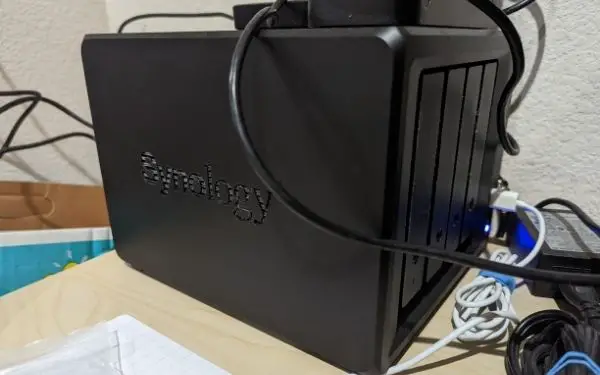Table of Contents
A Synology NAS is a data storage device with hardware and software features that are intended to make your life easier.
If you’re wondering how long it will last, the answer depends on what you do with it. In this article, let’s dive into how long you should expect your Synology to last.
How long does a Synology NAS last?
Given how fast technology has expanded and improved, expectations for digital storage and server equipment have also grown almost as fast. After all, it was just a few years ago that people were using CD discs for large storage, and now devices as small as a thumbnail hold 20 of those discs of similar size.
Unfortunately, like anything technological, devices burn out over time and wear out. NAS devices are no exception to that eventual degradation.
Why do NAS drives fail?
No technology can last forever. Even with the best of conditions, temperature changes alone from operations will eventually wear down and burn out circuits. When that happens, equipment stops operating as expected.
A huge leap forward occurred with storage and servers that moved away from moving parts and went to flash circuitry, but even that fails eventually. And, worse yet, the later technology is harder to recover from after a disaster failure.
When to replace a Synology NAS
That said, NAS drives can also fail from low quality construction, misuse, power fluctuations, physical damage, and other more direct causes.
Overall, even under the best of conditions, NAS drives are expected to last three years on the short side and five years on the long side.
So, if one is planning a life cycle replacement, a four-year cycle is probably a middle of the road perspective on what to expect.
Do SSDs have a longer lifespan than HDD disks?
SSD drives in general tend to be more stable, mainly because they don’t have moving parts. Old HDD drives integrate a spinning disc which wears down over time. However, as mentioned before, when an SSD drive does actually fail, recovery of the data left on it is far harder.
In fact, in many cases, the data has been wiped completely and lost. With an HDD, albeit sometimes expensively, the data has a far better chance of being recovered.
Can I leave my NAS turned on all the time?
Depending on the workload, a NAS drive can be left running continuously instead of needing to be turned off daily. In fact, it’s probably the best course of action to keep operating temperatures constant.
Heating up and cooling down takes a toll that adds up over time. As long as the drive is not being physically bounced around, the operation will continue as specified by the manufacturer.
However, eventually, everything wears down over time, so even a well-working NAS drive should be scheduled for replacement in about 4 years.
How do I transfer data from an old NAS to a new NAS?
For the most part, the standard approach of taking a disc image and copying it to the new drive is best. It captures everything doing so, including hidden files or those forgotten about by the casual reader.
However, if only portions need to be transferred, then, depending on size, a secondary temporary storage device can be used to simply copy and restore the data to the new drive. Afterwards, the old drive should be wiped thoroughly before being recycled or sold for scrap.
How long do the most popular hard drives last?
Most hard drives range in life cycle expectations based on the quality of the model bought. Regular consumer drives last about three years before becoming unreliable over time.
Some will fail immediately without warning, but most will fail with an increasing frequency of read/write errors and data corruption. Commercial and industrial drives will last closer to five years.
Keep in mind that technology and software changes can speed up the burn rate of a hard drive’s lifecycle as well.
How long do Western Digital hard drives last?
Western Digital drives come in different quality levels identified by their color coding. SSDs are the better choice for heavy, frequent processing work. HDDs are solid and usable for slow processing storage.
All of WD’s drives last anywhere from three to five years, and folks might be tempted to go for the blue label due to cost, either in SSD or HDD format. However, the WD Black label is specified to last up to five years by design.
How long do Toshiba hard drives last?
Toshiba drives have a very good reputation and also fall within the normal range of a three-to-five-year lifespan. For the most part, Toshiba drives are consumer grade, with varying levels of performance based on size and model.
How long do Seagate hard drives last?
Seagate drives have long had a poorer reputation than other companies, which was reflected in their pricing. Today, Seagate drives aren’t even rated by industry standards; the company stepped away from the norm and created its own lifespan measurement, which only confuses things further. However, they have, for the most part, lasted three to five years on average.
Other interesting articles:
